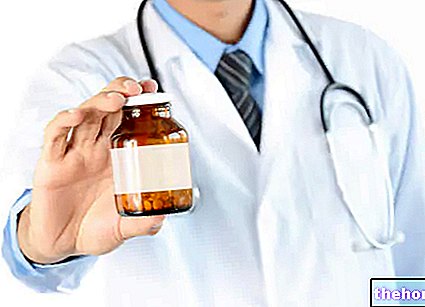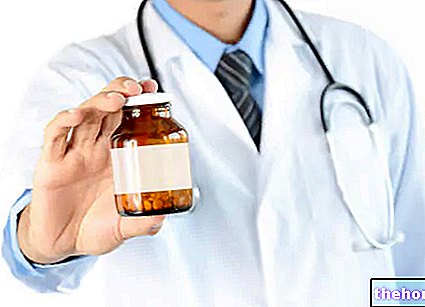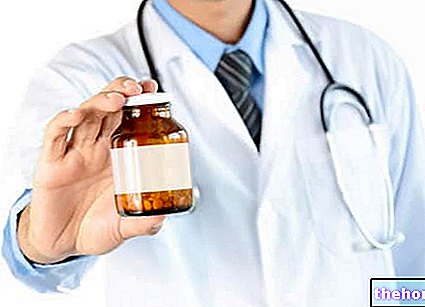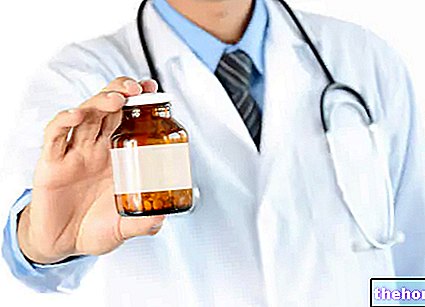Active ingredients: Amoxicillin
AMOXIN 250mg / 5ml GRANULATE FOR ORAL SUSPENSION - 60 ml BOTTLE
AMOXIN 250mg / 5ml GRANULATE FOR ORAL SUSPENSION - 100 ml BOTTLE
Amoxin package inserts are available for pack sizes: - AMOXIN 250mg / 5ml GRANULATE FOR ORAL SUSPENSION - 60 ml BOTTLE
AMOXIN 250mg / 5ml GRANULATE FOR ORAL SUSPENSION - 100 ml BOTTLE - AMOXIN 1 g tablets
Indications Why is Amoxin used? What is it for?
PHARMACOTHERAPEUTIC CATEGORY
Bactericidal antibiotic belonging to the group of semi-synthetic penicillins
THERAPEUTIC INDICATIONS
Infections from germs sensitive to amoxicillin affecting different organs and systems; - respiratory tract infections; - ENT and stomatological infections; - urogenital tract infections; - enteric and biliary tract infections; - skin and soft tissue infections; - infections of surgical interest.
Contraindications When Amoxina should not be used
Hypersensitivity to penicillins and cephalosporins or to the other components of the product. Infections sustained by penicillinase-producing microorganisms. Infectious mononucleosis (increased risk of skin reactions). Generally contraindicated in pregnancy and breastfeeding (see "Precautions for use").
Precautions for use What you need to know before taking Amoxin
Serious hypersensitivity and anaphylaxis reactions have been reported following parenteral use of penicillins and, more rarely, also following oral use. The onset of these reactions is more frequent in subjects with a history of hypersensitivity to multiple allergens, asthma, hay fever and urticaria. Cross-allergy with penicillin G, with other semi-synthetic penicillins and with cephalosporins is possible. A thorough medical history is therefore necessary before starting therapy. In case of allergic reactions, treatment must be interrupted and, under medical supervision, appropriate therapy must be instituted (corticosteroids, antihistamines or, in the presence of anaphylaxis, immediate treatment with adrenaline or other appropriate emergency measures). Prolonged use of penicillins can promote the development of non-sensitive germs and / or fungal infections. In this case, it is necessary to adopt adequate therapeutic measures, always under medical supervision. In case of renal insufficiency, adjust the dosage according to creatinine level or creatinine clearance. (See Posology). During prolonged treatments, especially if with high doses , it is advisable to carry out periodic checks of the blood count and of the liver and kidney function.
In pregnant and lactating women, taking into account the transplacental passage and into breast milk, the product can be administered only in cases of real need under direct medical supervision.
Interactions Which drugs or foods can modify the effect of Amoxin
The simultaneous intake of allopurinol increases the frequency of skin reactions. The simultaneous intake of oral contraceptives reduces the absorption of the latter. A synergistic therapeutic effect is known between semisynthetic penicillins and aminoglycosides. Probenecid administered simultaneously prolongs the blood levels of penicillins by competing with them in the kidney. Acetylsalicylic acid, phenylbutazone or other anti-inflammatory drugs in large doses, when administered concomitantly with penicillins increase plasma levels and half-life.
Warnings It is important to know that:
Amoxicillin does not offer particular advantages in infections by germs sensitive to penicillin G, nor is it active against resistant germs producing penicillinase. The product contains sucrose. This must be taken into account in diabetic patients and in those subjected to low-calorie diets. There is no known interference with driving skills and the use of machines. Caution is recommended in premature infants and during the neonatal period: renal, hepatic and haematological functions should be monitored.
KEEP OUT OF THE REACH AND SIGHT OF CHILDREN.
Additional Notes:
- 37.946 g of granules for extemporaneous oral suspension equal to 60 ml of suspension contain 33 g of sucrose. When taken according to the recommended dosage, each dose provides up to 2.75 g of sucrose
- 40 g of granules for extemporaneous oral suspension equal to 100 ml of suspension contain 33,257 g of sucrose. When taken according to the recommended dosage, each dose provides up to 1.66 g of sucrose. If you have been told by your doctor that you have an intolerance to some sugars, contact your doctor before taking this medicinal product.
Dose, Method and Time of Administration How to use Amoxine: Posology
Reconstituted suspension of the granules in children
up to 2 years: 125 mg equal to 2.5 ml of syrup every 8 hours
from 2 to 10 years: 250 mg equal to 5 ml of syrup every 8 hours
The dosage can be increased in severe cases, in the opinion of the physician.
Children weighing <40 kg
The daily dose for children is 40-90 mg / kg / day divided into two or three doses * (not to exceed 3 g / day) depending on the indication, the severity of the disease and the sensitivity of the pathogen (see special dosage recommendations below and Special Warnings section).
* Pharmacokinetic and pharmacodynamic data indicate that dosing given three times a day is associated with an increase in efficacy, therefore dosing given twice a day is only recommended when the dose exceeds the normal range.
For children weighing more than 40 kg the adult dosage is recommended.
Special dosage recommendations
Tonsillitis: 50 mg / kg / day in two divided doses.
Acute otitis media: in areas with a high incidence of pneumococci with reduced sensitivity to penicillins, the dosage should be dictated by national / local regulations. Early Lyme disease (isolated erythema migrans): 50 mg / kg / day in three divided doses , for more than 14-21 days.
Prophylaxis for endocarditis: 50 mg amoxicillin / kg body weight given as a "single single dose one" hour before surgery.
Dosage in renal insufficiency:
The dose should be reduced in patients with severe renal insufficiency. In patients with creatinine clearance below 30 ml / min an increase in the dosing interval and a decrease in the total daily dose is recommended (see section Special Warnings).
Kidney failure in children weighing less than 40 kg:
Preparation of the suspension
Add a small quantity of water to the bottle, shake well and let it rest for a few minutes. Then add more water until it reaches the level indicated on the bottle and shake again.
Before use, shake the prepared suspension well.
The dispenser corresponds to 2.5 ml, 5 ml and 10 ml of suspension corresponding respectively to 125 mg, 250 mg and 500 mg of amoxicillin.
The bottle should be shaken vigorously before each administration.
Overdose What to do if you have taken an overdose of Amoxin
To date, no toxic effects of overdose in humans have been described. In case of ingestion of excessive doses of the drug, emergency interventions must be aimed at counteracting the symptoms that may arise. Amoxicillin is dialysable with hemodialysis but not with peritoneal dialysis.
Side Effects What are the side effects of Amoxin
Hypersensitivity phenomena: erythema multiforme or maculopapular skin rashes, pruritus, urticaria, Quincke's edema and exceptionally anaphylactic shock; glossitis, stomatitis, nausea, vomiting, diarrhea, purpura, anemia, thrombocytopenia, eosinophilia, leukocytosis and agranulosis; the rate of serum transaminases.
Compliance with the instructions contained in the package leaflet reduces the risk of undesirable effects. It is important to inform the doctor or pharmacist of any undesirable effect, even if not described in the package leaflet.
Expiry and Retention
Store in the original packaging. The extemporaneous suspension must be stored at a temperature between + 2 and + 8 ° C and used within a week. Do not freeze. WARNING: Do not use the medicine beyond the expiration date indicated on the package
Composition and pharmaceutical form
COMPOSITION
60 ml bottle
37.946 g of granules for suspension contain:
Active ingredient: Amoxicillin trihydrate g 3.44 (equal to Amoxicillin g 3)
Excipients: Carboxymethylcellulose, Sucrose, Ammonium glycyrizinated, Freeze-dried banana, Freeze-dried pineapple, Cream flavor.
Bottle of 100 ml
40 g of granules for suspension contain:
Active ingredient: Amoxicillin trihydrate g 5.733 (equal to Amoxicillin g 5)
Excipients: Carboxymethylcellulose, Sucrose, Glycyrized Ammonium, Banana Flavor, Apricot Flavor.
PHARMACEUTICAL FORM AND CONTENT
"250mg / 5ml Granules for oral suspension"
60 ml bottle containing 37.946 g of granules
100 ml bottle containing 40 g of granules
Source Package Leaflet: AIFA (Italian Medicines Agency). Content published in January 2016. The information present may not be up-to-date.
To have access to the most up-to-date version, it is advisable to access the AIFA (Italian Medicines Agency) website. Disclaimer and useful information.
01.0 NAME OF THE MEDICINAL PRODUCT
AMOXIN GRANULATE FOR ORAL SUSPENSION
02.0 QUALITATIVE AND QUANTITATIVE COMPOSITION
60 ml bottle
37.946 g of 5% granules for suspension contain:
- Amoxicillin trihydrate g 3.44 (equal to Amoxicillin g 3)
Bottle of 100 ml
63.243 g of 5% granules for suspension contain:
- Amoxicillin trihydrate g 5.733 (equal to Amoxicillin g 5)
03.0 PHARMACEUTICAL FORM
"5% Granules for oral suspension"
60 ml bottle containing 37.946 g of granules
100 ml bottle containing 63.243 g of granules
to be diluted up to the mark with water.
04.0 CLINICAL INFORMATION
04.1 Therapeutic indications
Infections from germs sensitive to amoxicillin affecting different organs and systems. Respiratory tract infections; ENT and stomatological infections; Urogenital tract infections; enteric and biliary infections; skin and soft tissue infections; infections of surgical interest.
04.2 Posology and method of administration
Reconstituted suspension of 5% granules in children
up to 2 years: 125 mg equal to 2.5 ml of syrup every 8 hours
from 2 to 10 years: 250 mg equal to 5 ml of syrup every 8 hours
The dosage can be increased in severe cases in the opinion of the doctor.
04.3 Contraindications
Hypersensitivity to penicillins and cephalosporins or to the other components of the product. Infections sustained by penicillinase-producing microorganisms. Infectious mononucleosis (increased risk of skin reactions).
04.4 Special warnings and appropriate precautions for use
Amoxicillin does not offer particular advantages in infections by germs sensitive to penicillin G nor is it active against resistant germs producing penicillinase.
KEEP OUT OF REACH OF CHILDREN.
Serious hypersensitivity and anaphylaxis reactions have been reported following parenteral use of penicillins and, more rarely, also following oral use. The onset of these reactions is more frequent in subjects with a history of hypersensitivity to multiple allergens, asthma, hay fever and urticaria.Cross allergy is possible with penicillin G, with other semisynthetic penicillins and with cephalosporins. A careful medical history is therefore necessary before starting therapy. In the event of allergic reactions, the treatment must be interrupted and, under medical supervision, it must be instituted appropriate therapy (corticosteroids, antihistamines or, in the presence of anaphylaxis, immediate treatment with adrenaline or other appropriate emergency measures). Prolonged use of penicillins can favor the development of non-sensitive germs and / or fungal infections. In this case it is necessary to adopt adequate therapeutic measures, always under medical supervision. In case of renal insufficiency, adjust the dosage according to creatinine level or creatinine clearance. (See Posology). During prolonged treatments, particularly if with high doses, it is advisable to carry out periodic checks of the blood count and of the hepatic and renal function.
The product contains sucrose. This must be taken into account in diabetic patients and in those subjected to low-calorie diets.
04.5 Interactions with other medicinal products and other forms of interaction
The simultaneous intake of allopurinol increases the frequency of skin reactions. The simultaneous intake of oral contraceptives reduces the absorption of the latter. A synergistic therapeutic effect is known between semisynthetic penicillins and amino-glycosides. Probenecid administered simultaneously prolongs the blood levels of penicillins by competing with them in the kidney. Acetylsalicylic acid, phenylbutazone or other anti-inflammatory drugs in large doses, when administered concomitantly with penicillins increase their plasma levels and their half-life.
04.6 Pregnancy and lactation
In pregnant and lactating women, taking into account the transplacental passage and into breast milk, the product can be administered only in cases of real need under direct medical supervision.
04.7 Effects on ability to drive and use machines
There is no known interference with driving skills and the use of machines.
04.8 Undesirable effects
Hypersensitivity phenomena: erythema multiforme or maculopapular skin rashes, pruritus, urticaria, Quincke's edema and exceptionally anaphylactic shock; glossitis, stomatitis, nausea, vomiting, diarrhea, purpura, anemia, thrombocytopenia, eosinophilia, leukopenia and agranulosis; rate of serum transaminases.
04.9 Overdose
To date, no toxic effects of overdose in humans have been described. In case of ingestion of excessive doses of the drug, emergency interventions must be aimed at counteracting the symptoms that may arise. Amoxicillin is dialysable with hemodialysis but not with peritoneal dialysis.
05.0 PHARMACOLOGICAL PROPERTIES
05.1 Pharmacodynamic properties
Pharmacotherapeutic group:
Bactericidal antibiotic belonging to the group of semi-synthetic penicillins.
Mechanism of action:
The mechanism of action, as for all penicillins, is bactericidal and is carried out by inhibiting the synthesis of the peptidoglycan, an essential constituent of the bacterial wall.
05.2 "Pharmacokinetic properties
Amoxicillin is stable in an acidic environment. After oral administration the drug is absorbed 74 to 92% of the administered dose with peak blood levels within 1-2 hours. After 8 hours the levels are still therapeutically useful. Absorption is not affected. by the simultaneous presence of food in the stomach.
Elimination occurs mainly via the kidneys in an unchanged and therapeutically active form for over 70%.
The distribution in the tissues is particularly favorable with high concentrations especially in the bronchial secretions, especially if of the mucous type, in the exudates of the middle ear and paranasal sinuses. The biliary concentrations are also high.
05.3 Preclinical safety data
-----
06.0 PHARMACEUTICAL INFORMATION
06.1 Excipients
Carboxymethylcellulose, Sucrose, Glycyrized Ammonium, Freeze-dried Banana, Freeze-dried Pineapple, Cream Flavor.
Additional Notes:
37.946 g of granules for extemporaneous oral suspension equal to 60 ml of suspension contain 33 g of sucrose.
- 63.243 g of granules for extemporaneous oral suspension equal to 100 ml of suspension contain 55 g of sucrose.
When taken according to the recommended dosage, each dose provides up to 2.75 g of sucrose. The medicinal product is therefore contraindicated in hereditary fructose intolerance, glucose-galactose malabsorption syndrome or sucrose-isomaltase deficiency.
06.2 Incompatibility
It is possible cross allergy with penicillin G, with other semi-synthetic penicillins and with cephalosporins. A careful medical history is therefore necessary before starting therapy.
06.3 Period of validity
In intact packaging 2 years.
06.4 Special precautions for storage
In tightly closed containers away from light. The extemporaneous suspension must be stored at a temperature between + 2 and + 8 ° C and used within a week. Do not freeze.
06.5 Nature of the immediate packaging and contents of the package
Yellow glass bottle containing 37.946 or 63.243 g of granules for oral suspension at 5%.
60 ml bottle
Bottle of 100 ml
06.6 Instructions for use and handling
Add water into the bottle up to the level printed on the label.
Cap, invert and shake vigorously.
Once suspended, the level will reach the mark on the label.
Each scoop contains 125-250-500 mg (2.5 - 5 - 10 ml) of Amoxicillin.
The bottle should be shaken vigorously before each administration.
07.0 MARKETING AUTHORIZATION HOLDER
AESCULAPIUS FARMACEUTICI S.r.l. - Via Cozzaglio, 24 - 25125 BRESCIA.
08.0 MARKETING AUTHORIZATION NUMBER
5% Granules for oral suspension - Bottle 60 ml A.I.C. n ° 023966082
5% Granules for oral suspension - Bottle 100 ml A.I.C. n ° 023966106
09.0 DATE OF FIRST AUTHORIZATION OR RENEWAL OF THE AUTHORIZATION
Renewal date: May 2000
10.0 DATE OF REVISION OF THE TEXT
-----




























